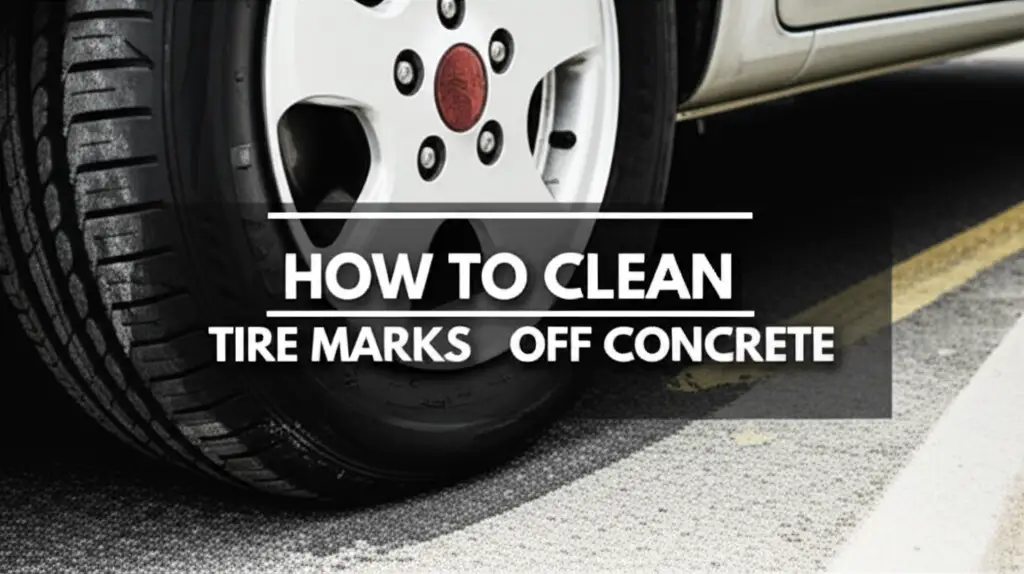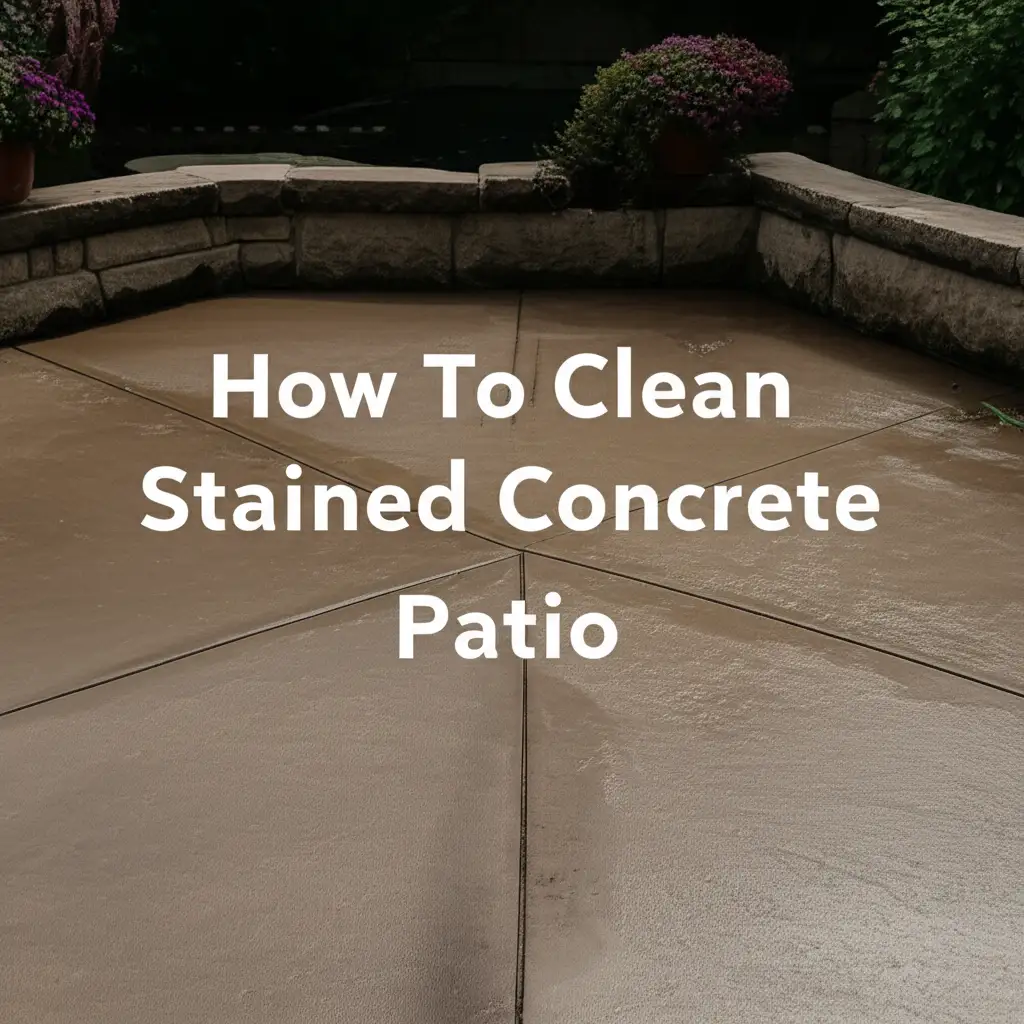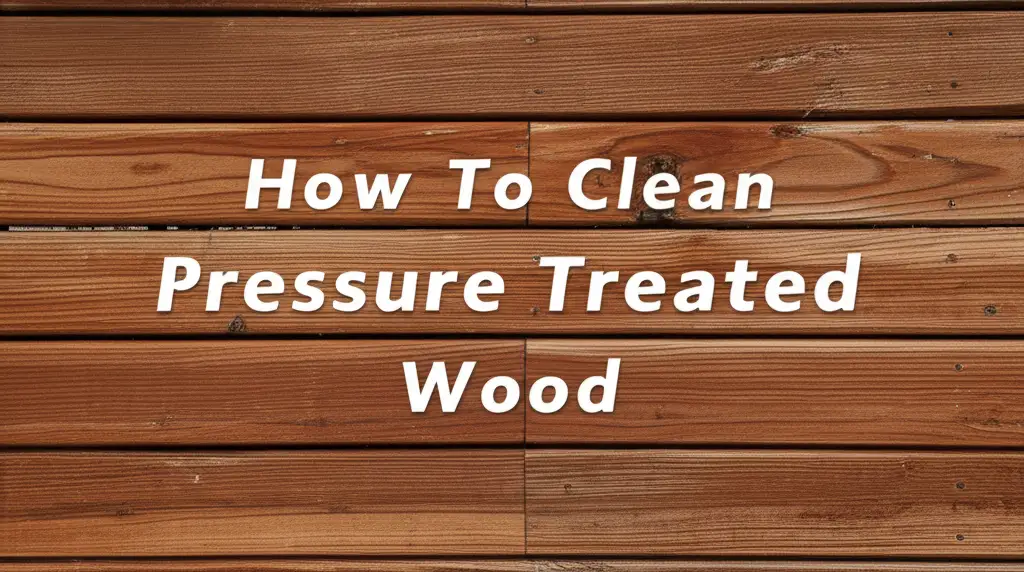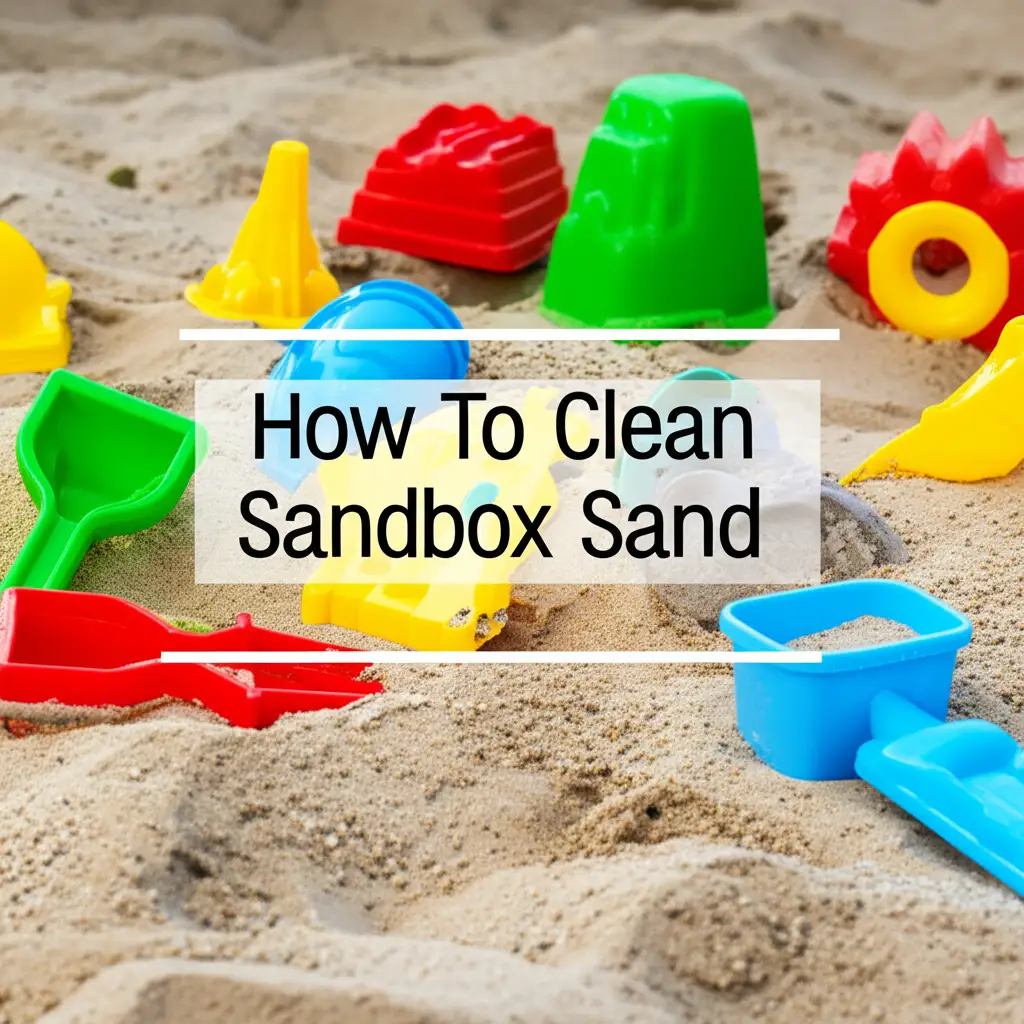· Outdoor Maintenance · 17 min read
How To Clean Tire Marks Off Concrete

Cleaning Tire Marks Off Concrete: A Comprehensive Guide
Tire marks on your concrete surfaces can be frustrating. These dark streaks often appear on driveways, garage floors, or patios. They reduce the aesthetic appeal of your home. You want to restore your concrete to a clean, uniform look.
Cleaning tire marks off concrete is a common task for homeowners. The good news is that many effective methods exist. You can choose a solution based on the mark’s severity and age. This guide explores different techniques, tools, and cleaning agents. We aim to help you achieve pristine concrete once again.
Takeaway
To effectively clean tire marks off concrete, consider these key steps:
- Identify the type and age of the tire mark.
- Gather the right tools and cleaning solutions for the job.
- Always test cleaners on a small, hidden area first.
- Start with gentler methods and progress to stronger ones if needed.
- Protect your concrete after cleaning to prevent future marks.
Quick Answer
To clean tire marks off concrete, apply a degreaser or a strong alkaline cleaner directly to the marks. Let it soak for 15-30 minutes, then scrub vigorously with a stiff brush. Rinse the area thoroughly with water, using a pressure washer for best results.
Understanding Tire Marks and Concrete Surfaces
Tire marks happen when hot rubber from a vehicle’s tires transfers onto a concrete surface. This transfer occurs due to friction and heat. The rubber is a polymer material. It leaves behind a dark, sometimes sticky residue.
Concrete is a porous material. This means it has tiny holes or voids. These pores can absorb the rubber particles. This absorption makes tire marks difficult to remove. The longer a tire mark sits, the deeper it penetrates. Older marks become more challenging to clean.
Fresh tire marks are often easier to remove. The rubber has not fully bonded with the concrete. Old marks have usually set in. They may require stronger cleaning solutions or more effort. Understanding this helps you choose the right cleaning approach. Different types of concrete, like sealed or unsealed, also react differently. A sealed surface resists stains better.
Concrete driveways and garage floors are common places for tire marks. These areas experience direct vehicle contact. Over time, these marks accumulate. They can make your property look neglected. Cleaning them improves curb appeal.
The texture of your concrete also matters. Rougher surfaces can trap rubber more easily. Smooth concrete might release the marks with less effort. Always assess the type of mark and your concrete before starting. This assessment guides your cleaning method.
Essential Tools and Cleaning Agents
Gathering the right supplies makes the cleaning process efficient. You need specific tools and cleaning agents. These items help break down and lift the rubber from the concrete. Being prepared saves time and effort.
Your basic toolkit should include a stiff-bristled brush. This brush provides the necessary scrubbing power. A push broom with stiff bristles also works for larger areas. Safety gear is crucial. Wear gloves, eye protection, and appropriate clothing. This protects you from chemicals and debris.
For cleaning agents, several options are effective. Each has its strengths. You can start with milder solutions and move to stronger ones. This approach minimizes potential damage to your concrete.
Common cleaning agents include:
- Dish Soap: Basic dish soap cuts through grease and grime. It works best on fresh or light tire marks. It is a mild, non-toxic option.
- Degreasers: Automotive degreasers or industrial concrete degreasers are powerful. They specifically target oil, grease, and rubber. Look for alkaline-based formulas. These are highly effective for rubber stains.
- Baking Soda and Vinegar: This combination creates a fizzy reaction. It can help lift some stains. It is a natural, eco-friendly option. Learn more about how to clean with vinegar and baking soda for various cleaning tasks.
- Trisodium Phosphate (TSP): TSP is a heavy-duty cleaner. It is very effective for stubborn marks. Use it with caution, as it is a strong chemical. Always follow product instructions carefully.
- Muriatic Acid (Hydrochloric Acid): This is a very strong acid. It is generally a last resort for very tough stains. It requires extreme caution and proper ventilation. Muriatic acid can etch concrete if not used correctly. It is not suitable for all concrete types.
You might also need a garden hose for rinsing. A pressure washer is highly recommended for faster and more thorough rinsing. A bucket for mixing solutions is also useful. Ensure all your tools are clean before you start.
Pre-Cleaning Steps for Best Results
Preparation is key to any successful cleaning project. Skipping pre-cleaning steps can reduce the effectiveness of your efforts. Proper preparation ensures that your cleaning agents work directly on the tire marks. This makes the entire process smoother and more efficient.
First, clear the area. Remove any vehicles, furniture, or other items from the concrete surface. You want an unobstructed workspace. This prevents accidental damage to your belongings. It also ensures you can access all the affected spots.
Next, sweep or blow away loose debris. Dirt, leaves, and small stones can hinder cleaning. These particles can also scratch your concrete during scrubbing. A leaf blower or a stiff broom works well for this step. Ensure the surface is free of any loose materials.
Hose down the area with water. This helps wet the concrete. Wetting the surface prevents cleaning solutions from drying too quickly. It also helps loosen some surface grime. A damp surface also allows the cleaning agents to penetrate tire marks better. Ensure the entire marked area is wet.
Always test your chosen cleaning solution on an inconspicuous spot. Concrete surfaces can react differently to chemicals. An area near a wall or in a corner works well for testing. Apply a small amount of the cleaner. Observe it for a few minutes. Check for discoloration or any adverse reactions. This step prevents large-scale damage to your concrete.
If using a pressure washer, check your concrete’s condition. Look for cracks or weak spots. High-pressure water can worsen existing damage. Address any structural issues before using powerful tools. Proper preparation sets the stage for effective tire mark removal.
Removing Fresh Tire Marks: Quick Methods
Fresh tire marks are the easiest to remove. They have not yet deeply penetrated the concrete. Acting quickly increases your chances of complete removal. You can often use simpler, milder cleaning agents for these marks.
Start with dish soap and water. Mix a generous amount of liquid dish soap with warm water in a bucket. Pour this soapy solution directly onto the fresh tire marks. Let it sit for about 10-15 minutes. This allows the soap to break down the rubber and oil.
After soaking, scrub the marks vigorously. Use a stiff-bristled brush. Apply firm pressure as you scrub. You should see the marks starting to fade. The soap helps emulsify the rubber particles. Rinse the area thoroughly with a garden hose. Repeat if necessary. This method often works well for recent, light marks.
Another effective option for fresh marks is a mild degreaser. Many household degreasers can work. Spray the degreaser directly onto the tire marks. Follow the product instructions for dwell time, usually 5-10 minutes. The degreaser begins to dissolve the rubber.
Once the degreaser has sat, scrub with your stiff brush. Work the degreaser into the concrete. You will notice the marks becoming lighter. Then, rinse the entire area with water. Make sure to remove all degreaser residue. This prevents any slippery spots.
For slightly tougher fresh marks, try baking soda paste. Mix baking soda with a little water to form a thick paste. Apply the paste directly to the tire marks. Let it sit for about 30 minutes. Baking soda is a gentle abrasive and odor absorber. It can help lift the rubber.
After the paste has dried slightly, scrub it into the marks. Use a firm brush. The abrasive action helps remove the rubber. Rinse the area thoroughly with water. You can combine baking soda with a little vinegar for a fizzing action. This can further loosen stubborn particles. Remember that fresh marks offer the best chance for easy removal.
Tackling Stubborn, Old Tire Stains
Old tire marks pose a greater challenge. The rubber has had time to bond with the concrete’s pores. You will need stronger cleaning agents and more elbow grease. Do not get discouraged if the marks do not disappear immediately. Patience and persistence are key for these stains.
One of the most effective solutions for old tire stains is a heavy-duty concrete degreaser. Look for products specifically designed for concrete and oil stains. These degreasers have strong alkaline formulas. They break down the chemical bonds of rubber and oil. Apply the degreaser undiluted directly to the marks.
Allow the degreaser to soak for at least 30 minutes. For very old or deep stains, you might need to let it sit for an hour or more. Some products recommend keeping the area wet during this time. Read the product instructions carefully. The longer soak time allows the powerful chemicals to penetrate the concrete.
After soaking, scrub the marks with a stiff-bristled brush. Apply maximum pressure. Work the degreaser into the stain. You may need to scrub for several minutes. A wire brush can be used carefully on unsealed concrete for very tough spots. Be gentle to avoid damaging the surface. Once scrubbed, rinse the area thoroughly with a powerful stream of water. A pressure washer is highly recommended for this step.
For extremely stubborn marks, Trisodium Phosphate (TSP) is an option. TSP is a powerful alkaline cleaner. It requires careful handling. Mix TSP according to package directions, usually with warm water. Apply the solution to the marks. Let it sit for 15-20 minutes.
Scrub vigorously with a stiff brush. TSP is excellent at lifting deep-set stains. After scrubbing, rinse the area completely. Ensure no TSP residue remains, as it can be slippery. Always wear gloves and eye protection when using TSP. Proper ventilation is also important. This strong cleaner can make a significant difference on old marks. For other challenging concrete stains, consider tips for how to clean wood stain off concrete.
Pressure Washing for Tire Mark Removal
Pressure washing is an invaluable tool for removing tire marks. It combines the power of water with high pressure. This combination can blast away stubborn rubber residues. A pressure washer makes the job faster and more effective. It is often the preferred method for large concrete areas or deep stains.
Before you begin pressure washing, prepare the area. Clear away all loose debris, as mentioned in previous sections. Wet the concrete surface with a regular hose. This helps prevent etching and distributes the cleaning solution evenly. If you are cleaning an entire concrete patio without a pressure washer, separate methods apply, but here we focus on power. Read about how to clean concrete patio without pressure washer for alternative methods.
Apply your chosen cleaning solution. This could be a degreaser or a concrete cleaner. You can apply it directly to the tire marks. Some pressure washers have a detergent tank. You can use this to apply the solution. Allow the cleaner to dwell on the marks for the recommended time. This lets the chemical action begin.
Now, it is time to pressure wash. Start with a wide-angle nozzle, like a 25-degree or 40-degree tip. Hold the wand a few inches from the surface. Begin spraying in a consistent, overlapping pattern. Work your way across the tire marks. Avoid holding the nozzle in one spot for too long. This can create etch marks or stripes on your concrete.
For particularly stubborn marks, switch to a narrower nozzle. A 15-degree tip provides more concentrated power. You can also get closer to the marks, but always move the wand. Move in a slow, steady motion. The high-pressure water will lift and remove the embedded rubber. You might see the dark rubber particles wash away.
After pressure washing the marked areas, rinse the entire surface. This removes any leftover cleaner or loosened debris. Stand back and observe your work. You may need to repeat the process for very deep or old marks. Always wear appropriate safety gear when using a pressure washer. This includes eye protection and sturdy shoes. A pressure washer can significantly improve your concrete’s appearance.
Advanced Solutions for Persistent Marks
Sometimes, standard methods are not enough. Very old or deeply embedded tire marks require more aggressive solutions. These methods involve stronger chemicals or specialized techniques. Use them only after trying other options. Always prioritize safety when using powerful cleaning agents.
Muriatic Acid (Hydrochloric Acid): Muriatic acid is a powerful chemical. It is a last resort for tire marks. It can etch or damage concrete if used improperly. Always dilute muriatic acid according to product instructions. A typical dilution is one part acid to 10 parts water. Pour the acid into the water, never the other way around. Wear heavy-duty gloves, eye protection, and a respirator. Ensure excellent ventilation.
Apply the diluted acid solution to the tire marks. Do not let it sit for more than a few minutes. The acid reacts quickly. You may see some bubbling. Scrub the marks with a stiff, acid-resistant brush. Immediately rinse the area thoroughly with plenty of water. Neutralize the acid by applying a baking soda and water mixture afterwards. Then rinse again. This method is risky and best left to professionals if you are unsure.
Poultices: A poultice is a paste designed to draw out stains from porous surfaces. It involves mixing an absorbent material with a chemical cleaner. For tire marks, you can use a strong degreaser or TSP. Mix it with an absorbent material like diatomaceous earth or fuller’s earth. The consistency should be like peanut butter.
Apply a thick layer of the poultice over the tire marks. Cover it with plastic wrap. Tape the edges down to prevent it from drying out. Let it sit for 24-48 hours. The poultice slowly draws the stain out of the concrete. After the dwell time, remove the plastic. Let the poultice dry completely. Scrape off the dried paste. Rinse the area thoroughly with water. This method works well for deep, persistent stains without harsh scrubbing.
Commercial Tire Mark Removers: Several specialized commercial products are available. These are formulated specifically for tire mark removal. They often contain strong solvents or surfactants. Follow the product’s instructions carefully. These removers are typically more concentrated and effective than general cleaners. They might be more expensive, but they can be worth the investment for tough jobs. Always test these products in a small area first.
When dealing with very stubborn marks, it’s wise to consider professional help. Concrete cleaning professionals have access to industrial-grade equipment and chemicals. They also have the expertise to safely apply these solutions. If you encounter difficult stains like those from battery acid, similar caution is needed. Learn more about how to clean battery acid off concrete for specific guidance.
Protecting Your Concrete from Future Tire Marks
Cleaning tire marks is satisfying, but preventing them is even better. Protecting your concrete surfaces saves you time and effort in the long run. Taking a few proactive steps can significantly reduce future staining. This helps maintain the pristine look of your driveway or garage floor.
The most effective way to prevent tire marks is to seal your concrete. Concrete sealers form a protective barrier over the surface. This barrier makes the concrete less porous. When a surface is less porous, rubber particles cannot penetrate deeply. They remain on the surface, making them easier to clean.
There are different types of concrete sealers. Acrylic sealers are popular for their ease of application and cost-effectiveness. Penetrating sealers soak into the concrete, offering long-lasting protection. Choose a sealer suitable for outdoor concrete. Apply the sealer according to the manufacturer’s instructions. You typically apply it with a roller or sprayer. Reapply sealer every few years, or as recommended by the product.
Good vehicle maintenance also plays a role. Tires that are properly inflated and balanced wear evenly. This reduces the likelihood of “scuffing” that can leave marks. Avoid sudden braking or sharp turns on your concrete. Rapid acceleration or sharp turns increase tire friction. This high friction often leads to tire marks. Drive slowly and smoothly on your concrete surfaces.
Consider using parking mats in your garage. These mats are made of rubber or other protective materials. They provide a barrier between your vehicle’s tires and the concrete floor. Parking mats catch any drips or residues from your car. They protect the concrete from not just tire marks but also oil stains or other leaks. They are easy to install and remove for cleaning.
Regular cleaning also helps. Sweep your concrete surfaces regularly. This removes dirt and grit that can contribute to tire wear and marking. Hose down the concrete periodically. This washes away any light residues before they set. Simple maintenance keeps your concrete looking its best. Proactive measures are always easier than reactive cleaning.
FAQ Section
How long does it take for tire marks to set on concrete?
Tire marks can start setting on concrete within a few hours. The longer they remain, the deeper the rubber particles penetrate the porous surface. Fresh marks, even a day or two old, are typically easier to remove. Old marks, weeks or months old, become much more challenging due to deeper absorption and bonding with the concrete.
Is WD-40 effective for removing tire marks?
WD-40 can be effective for small, fresh tire marks. It acts as a solvent and lubricant, which can help break down the rubber. Spray WD-40 directly on the mark, let it sit for a few minutes, then scrub with a stiff brush. Rinse thoroughly afterward. For larger or older marks, stronger degreasers or specialized concrete cleaners are usually more effective.
Can baking soda and vinegar remove stubborn tire marks?
Baking soda and vinegar can help with lighter or fresher tire marks. The chemical reaction creates fizzing action that may loosen some residues. However, for stubborn, deeply embedded tire marks, this natural solution is often not strong enough. You will likely need a heavy-duty degreaser or a more aggressive concrete cleaner for those.
Will a pressure washer damage my concrete while removing tire marks?
A pressure washer, when used incorrectly, can damage concrete. Holding the nozzle too close, using too narrow a tip (like a 0-degree nozzle), or lingering too long in one spot can etch the surface. Use a wider tip (25 or 40 degrees) and keep the wand moving in consistent strokes to avoid damage. Test a small area first.
What are the best commercial products for tire mark removal?
The best commercial products for tire mark removal are typically heavy-duty concrete degreasers. Brands like “Oil Eater,” “Greased Lightning,” or specialized concrete stain removers are highly effective. Look for alkaline-based formulas. Always read reviews and product instructions carefully. These products are formulated to tackle tough rubber and oil stains.
How do I prevent tire marks from coming back after cleaning?
To prevent tire marks from returning, consider sealing your concrete surface. A concrete sealer creates a protective barrier, making the surface less porous and easier to clean. Also, avoid sudden braking, sharp turns, or rapid acceleration on your concrete. Regularly sweep and hose down the area to remove loose dirt and residues.
Conclusion
Cleaning tire marks off concrete effectively restores the appearance of your driveways, garages, and patios. We have explored a range of methods, from simple dish soap for fresh marks to powerful degreasers and pressure washing for stubborn stains. Remember, early action makes the job easier, but even old marks can be tackled with persistence and the right tools.
Always start with the least aggressive method and progress if needed. Prioritize safety by wearing protective gear and testing solutions in an inconspicuous area. After successfully cleaning your concrete, consider sealing the surface to prevent future tire marks. This proactive step saves effort and keeps your concrete looking pristine longer. Embrace these tips to maintain beautiful, mark-free concrete surfaces around your home.
- concrete cleaning
- tire mark removal
- driveway cleaning
- stain removal




